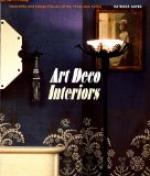The effect of this mesalliance upon all Art, including interior decoration, was to cause its immediate decline. Elaboration and banal designs, too much splendour of gold and silver and ivory inlaid with gold, resulted in a decadent art which reflected a decadent race and Rome fell! Not all at once; it took five hundred years for the neighbouring races to crush her power, but continuous hectoring did it, in 476 A.D. Then began the Dark Ages merging into the Middle Ages (fifth to fifteenth centuries).
Dark they were, but what picturesque and productive darkness! Rome fell, but the Carlovingian family arose, and with it the great nations of Western Europe, to give us, especially in France, another supreme flowering of interior decoration. Britain was torn from the grasp of Rome by the Saxons, Danes and Normans, and as a result the great Anglo-Saxon race was born to create art periods. Mahomet appeared and scored as an epoch-maker, recording a remarkable life and a spiritual cycle. The Moors conquered Spain, but in so doing enriched her arts a thousandfold, leaving the Alhambra as a beacon-light through the ages. Finally the crusades united all warring races against the infidels. Blood was shed, but at the same time routes were opened up, by which the arts, as well as the commerce, of the Orient, reached Europe. And so the Byzantine continued to contend with Gothic art—that art which preceded from the Christian Church and stretched like a canopy over Western Europe, all through the Middle Ages. It was in the churches and monasteries that Christian art, driven from pillar to post by wars, was obliged to take refuge, and there produced that marvellous development known as the Gothic style,—of the Church, for the Church, by the Church, perfected in countless Gothic cathedrals,—crystallised glorias lifting their manifold spires to heaven,—ethereal monuments of an intrepid Faith which gave material form to its adoration, its fasting and prayer, in an unrivalled art.
There is one early Gothic chair which has come down to us, Charlemagne’s, made of gilt-bronze and preserved in the Louvre, at Paris. Any knowledge beyond this one piece, as to what Carlovingian furniture was like (the eighth century) we get only from old manuscripts which show it to have been the pseudo-classic, that is, the classic modified by Byzantine influence, and very like the Empire style of Napoleon I. Here is the reason for the type. Constantinople was the capital of the Eastern Empire, when in 726 A.D., Emperor Leo III prohibited image worship, and the artists and artisans of his part of the world, in order to earn a livelihood, scattered over Europe, settling in the various capitals, where they were eagerly welcomed and employed.
Even so late as the tenth to fourteenth centuries the knowledge we have of Gothic furniture still comes from illustrated manuscripts and missals preserved in museums or in the national libraries.




